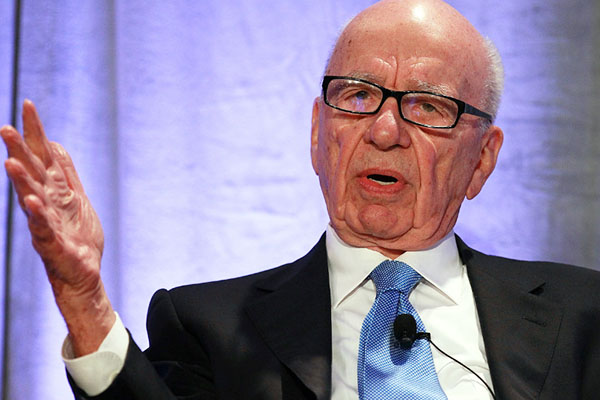
Murdoch-controlled
This page provides a map of the Australian media landscape, highlighting ownership, the regulatory regime, advocacy groups and major research bodies. It covers – broadcast ownership newspaper magazine and journal publishing book publishing music film and hentai gratis production and distribution advocacy groups statistics legislative frameworks government agencies
the internet. Like Canada and Finland (but less so than Italy, where publishing and broadcasting are dominated by Berlusconi interests, or New Zealand), the Australian mass media are concentrated in a few groups and their affiliates.
subsection heading icon broadcast ownership An overview of Australian broadcasting is provided here. Australia has two national (government-funded) noncommercial television and radio broadcasters – the ABC and SBS. Both have a small share of the national market. Commercial free-to-air television involves three networks (ie stations that owned by the network or by an affiliate). These include the Packer Nine Network, the Seven and Ten networks and affiliates such as Southern Cross and WIN.
Pay-tv is dominated by Foxtel, a partnership between Packer (25%), Murdoch-controlled News (25%) and local telecommunications giant Telstra. Commercial radio has a similar concentration, dominated by the DMG, APN, Village-owned Austereo and RG Capital radio groups. ‘Community radio’ has a derisory market share. subsection heading icon newspapers, magazines and journals
Newspaper ownership is highly concentrated, with four groups accounting for over 80% of titles and 96% of readership. The major groups are the Murdoch-controlled News, the Fairfax group, the O’Reilly-controlled APN and the Rural Press group (controlled by a wing of the Fairfax family).
General magazine publishing is even more concentrated, with most circulation attributable to titles owned by the Packer and News groups or licensed from overseas groups such as Hearst, Hachette, Advance and AOL Time Warner. Specialist journal publishing is characterised by a large number of small groups and the offshore giants such as Thomson and Elsevier. subsection heading icon book publishing
As with book publishing in most English-speaking counties, most sales accrue to a handful of offshore giants (whether directly or through local subsidiaries). These include Pearson, Viacom, AOL Time Warner, Wolters Kluwer, Elsevier, Thomson, Holtzbrinck and News. subsection heading icon music The same concentration is evident in recording and music publishing, where a handful of independents (usually affiliated with industry majors) compete with global giants such as Sony, AOL Time Warner, News and Bertelsmann. subsection heading icon film production and distribution
Australia continues to create new films but global distribution is in the hands of a few companies. Most sales relate to product from what used to be called ‘Hollywood’, ie Vivendi Universal, Viacom, Disney, AOL Time Warner and Sony. Cinema operations are dominated by the Packer-controlled Hoyts, AHL and Village Roadshow. subsection heading icon advocacy groups
Australian Press Council (APC) is the print media self-regulatory body, funded by newspaper and magazine publishers. Its treatment of misbehaviour by its members has been compared to a flogging – oh, the pain – with a wilted lettuce. The Australian’s editor-in-chief described it during 1999 as an “institutionalised bureaucracy only concerned with its own self-preservation”.
The Council’s site includes selected papers, its newsletter and Deborah Kirkman’s thesis Whither the Australian Press Council: The Formation, Function & Future of the Council. An overseas perspective is provided by Richard Shannon’s A Press Free and Responsible (London: John Murray 2001), an account of the APC’s UK counterpart.
The Advertising Standards Council is an independent body dealing with complaints about television, radio, print and outdoor advertising The Australian Centre for Independent Journalism (ACIJ) at the University of Technology, Sydney is one of a number of academic centres concerned with journalism. The Audit Bureau of Circulations (ABC) and Circulations Audit Bureau (CAB) are nonprofit bodies tracking print circulations on behalf of advertisers
The Federation of Australian Commercial Television Stations (FACTS) represents the commercial free-to-air television networks. The Federation of Australian Radio Broadcasters (FARB) represents the commercial radio broadcasters. The Community Broadcasting Association of Australia (CBAA) is the industry body for community radio and television stations.
The Community Broadcasting Foundation (CBF) is an independent funding body, using money from the Commonwealth Department of Communications Information Technology & the Arts and the Aboriginal & Torres Strait Islander Commission. The National Ethnic & Multicultural Broadcasters Council (NEMBC) represents ethnic broadcasting organisations, with around 82 stations across Australia.
The Australian Publishers Association (APA) represents book publishers, embracing most of the commercial publishers. The Australian Internet Industry Association (IIA) represents many internet service providers and others, such as Caslon Analytics, concerned with the web and ‘internet industries’. The Australian Interactive Multimedia Association (AIMIA) represents multimedia developers The Community Broadcasting Online (CBO) initiative is an offshoot of Commonwealth community broadcasting programs, designed to encourage the broadcasters to go online.
Australian Screen Directors Association (ASDA) represents directors. The Screen Producers Association of Australia (SPAA) represents producers. Screen Network Australia (SNA) is a gateway developed by the Australian Film Institute, AFC and other bodies such as MetroScreen (Metro). The Media Entertainment & Arts Alliance (MEAA) is the major entertainment sector union, representing the gamut from performers to journalists
The National Indigenous Media Association of Australia (NIMAA) represents Indigenous media organisations. The Australasian Web Publishers Association (AWPA) competes with the Australian Interactive Multimedia Industry Association. subsection heading icon statistics As at 2000 there were
48 commercial television station licenses, organised into three networks – the Seven, Nine and Ten networks two national public broadcasters – the ABC and SBS. three major subscription television morritastube operators (Foxtel, Optus and Austar), with no more than two major subscription television operators in any one area 220 commercial AM and FM radio licenses
228 community radio broadcasting licenses, including 80 Broadcasting for Remote Aboriginal Communities Scheme (BRACS) licenses concerned with delivery of television and radio to remote indigenous communities six community television stations, broadcasting on channel 31 in Sydney, Melbourne, Brisbane, Perth, Adelaide and Lismore 126 AM and FM radio open narrowcast licenses, catering for ethnic or other minority interests and providing education services or tourist radio services;
In 1996-7 television program production was valued at $1,140 million, with advertisement production valued at $234 million. In 1997-98 royalties from television program exports were estimated at around $100 million. Commercial television licenses were valued at over $3 billion. For radio the figure was $800 million. The Australian Film Commission suggests that during 1999-2000 Pay-TV operators had revenue of $758 million on a subscriber base of around 1.2 million (around 16%) of households. subsection heading icon legislative frameworks
In Australia the primary ‘network’ legislation is the Telecommunications Act 1997, complemented by the Commonwealth Broadcasting Services Act 1992. The Act was amended by the Broadcasting Services Amendment (Online Services) Act 1999, essentially through requirements that Australian internet service providers and content hosts restrict access to offensive material – ”prohibited internet content’. That content includes graphics, animation and text. The expectation is that Australian states/territories will develop complementary legislation (similar to that for film, literature and computer games) regarding publication and transmission of proscribed content. The Commonwealth Crimes Act prohibits use of any ‘carriage service’ – including the internet – in a way that any reasonable person would consider offensive.
The new Broadcasting Services Amendment (Digital Television & Datacasting) legislation privileges the commercial free-to-air television networks by imposing restrictions on ‘datacasting’ and, many believe, on delivery via the internet of audiovisual or multimedia content. The Commonwealth Radiocommunications Act 1992 and Telecommunications Act 1997 are administered by the Australian Communications Authority (ACA) – see below – established by porno chilango the Australian Communications Authority Act 1997.
The broadcasting and telecommunications regime emphasises self-regulation or ‘light touch’ regulation, although as we’ve pointed out elsewhere in this site some touches are lighter than others …. particularly if you own a free-to-air television network. government agencies Major features of the terrain are the Department of Communications, Information Technology & the Arts (DCITA), the Australian Broadcasting Authority (ABA) and the Australian Communications Authority (ACA).
DCITA included the National Office for the Information Economy (NOIE) – established as an independent entity to encourage the private sector’s move online but with underwhelming results. That’s reflected in the 2004 decision to merge NOIE with the less glamorous Office of Government Online (OGO), concerned with getting the bureaucracy onto the internet.
The ABA has day to day responsibility for the media regime, dealing with the Broadcasting Services Act and thus with free-to-air television and radio (inc. digital broadcasting), pay television and internet service providers and hosts. The ACA (formerly Austel, the Australian Telecommunications Authority) is concerned with telecommunications and thus oversights the operation of Telstra and its competitors.
The federal Attorney-General’s Department (A-G’s), the Australian equivalent of the US Department of Justice, includes the Office of Film & Literature Classification (OFLC) – the former censors office – responsible for the ‘R’ and other ratings of proscribed content. Competition – or perceptions of the lack of it (Telstra often being compared to the 800 kilo gorilla within a small cage) – is of increasing concern to the Australian Competition & Consumer Commission (ACCC), the national competition watchdog. internet
The 1997 telecommunications legislation reflected a commitment to deregulate internet services within Australia, including for example the introduction of competition in domain name registration. Internet service provision in Australia – discussed in detail here – is marked by competition by a large number of service providers, with a handful having most of the market. The au Domain Administration (auDA) is a non-government body open to those concerned with the internet industry. It is discussed in more detail in a separate profile on the Caslon site.


